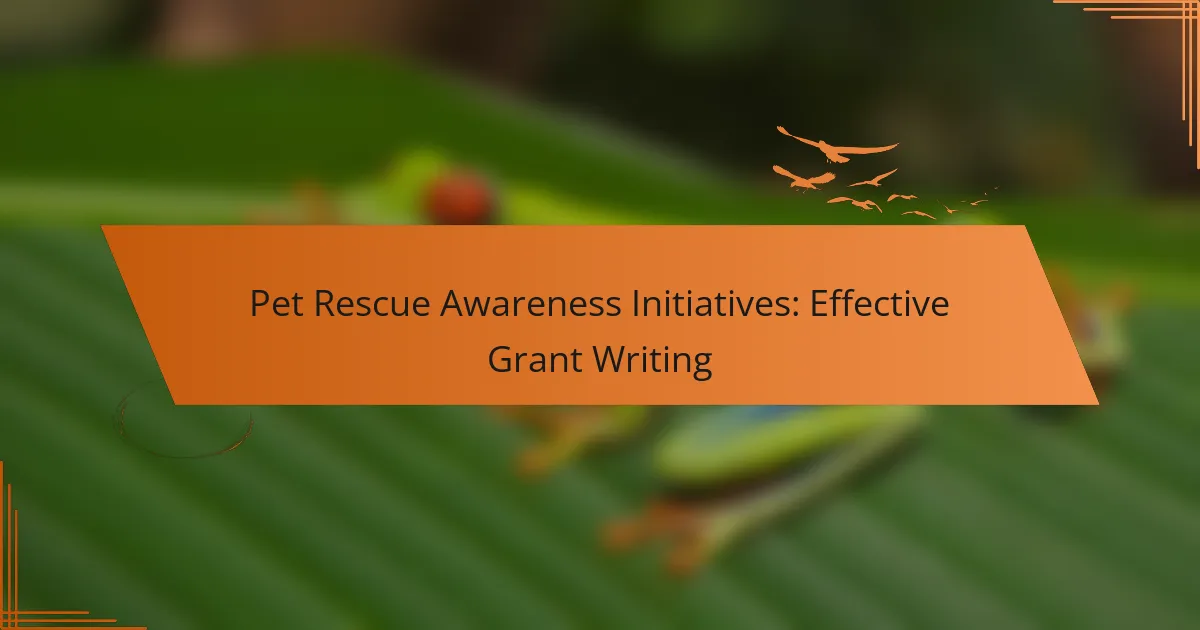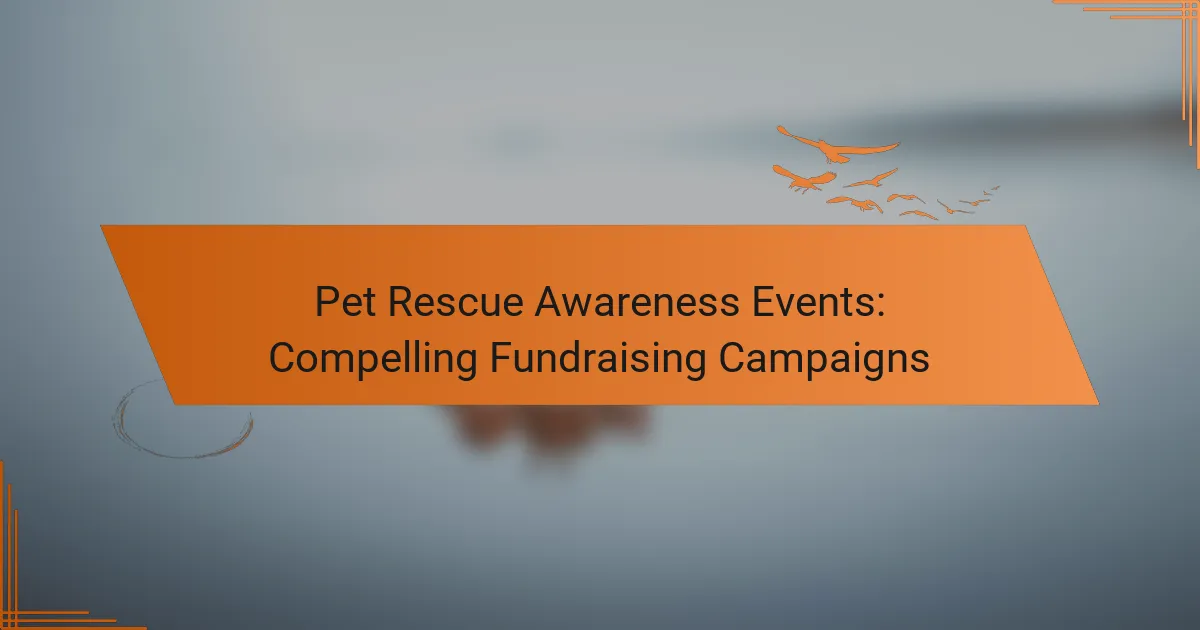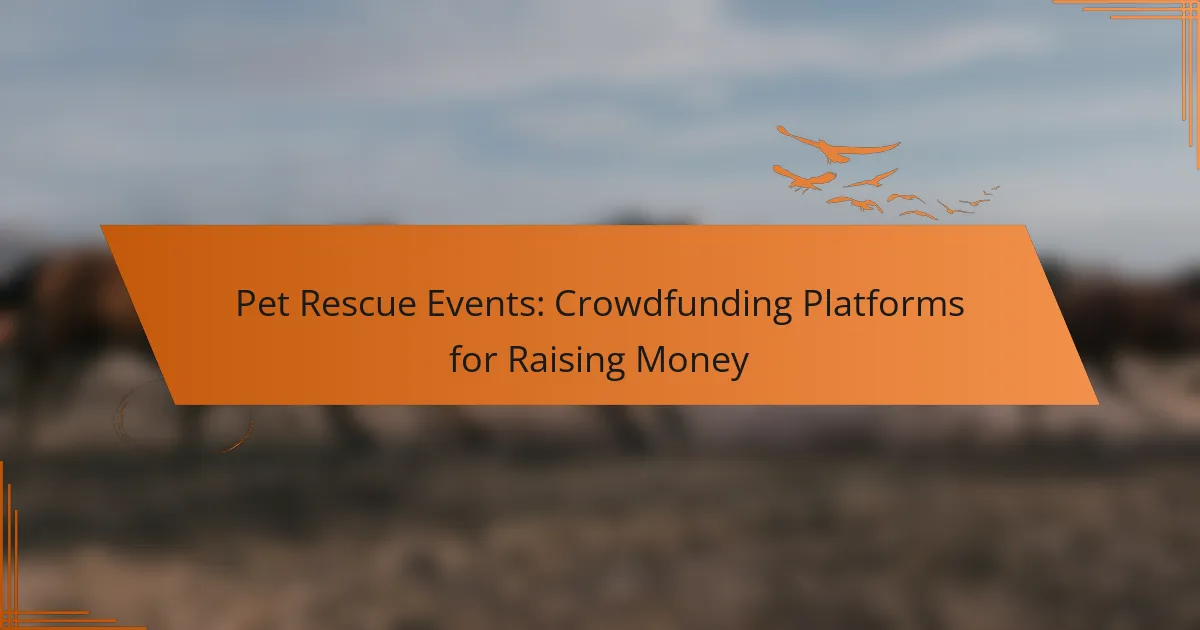Grant writing plays a crucial role in enhancing pet rescue initiatives by securing vital funding for shelters and community outreach programs. By developing clear objectives, detailed budgets, and compelling narratives, organizations can effectively communicate their mission and attract potential funders. This financial support is essential for improving animal welfare and ensuring that rescue operations can thrive.

How can grant writing support pet rescue initiatives in the US?
Grant writing can significantly enhance pet rescue initiatives in the US by providing essential funding for various operational needs. Effective grant proposals can secure financial resources that directly support shelters, veterinary care, and community outreach efforts.
Funding for shelter operations
Grants can cover a range of shelter operational costs, including staffing, utilities, and maintenance. Many organizations seek funding to improve facilities, which can lead to better animal care and increased adoption rates. For instance, a grant might provide $10,000 to $50,000 for upgrading kennel spaces or enhancing safety protocols.
When applying for these grants, it’s crucial to present a clear budget and demonstrate how the funds will improve shelter efficiency. Highlighting specific needs, such as increased staffing during peak seasons, can strengthen your proposal.
Support for veterinary care
Veterinary care is vital for the health and well-being of rescued animals, and grants can help cover expenses such as vaccinations, spaying/neutering, and emergency medical treatments. Many pet rescue organizations apply for grants ranging from a few thousand to tens of thousands of dollars to ensure that all animals receive necessary medical attention.
To enhance your chances of receiving funding, include detailed descriptions of the veterinary services needed and the expected outcomes for the animals. Collaborating with local veterinarians can also provide credibility to your proposal.
Community outreach programs
Community outreach programs are essential for raising awareness about pet adoption and responsible pet ownership. Grants can fund initiatives like educational workshops, adoption events, and partnerships with local schools. These programs often require budgets of $5,000 to $20,000, depending on the scope and scale of the outreach efforts.
When drafting grant applications for outreach, emphasize the potential impact on the community and include metrics for success, such as increased adoption rates or improved public knowledge about pet care. Engaging community stakeholders can also enhance your proposal’s effectiveness.
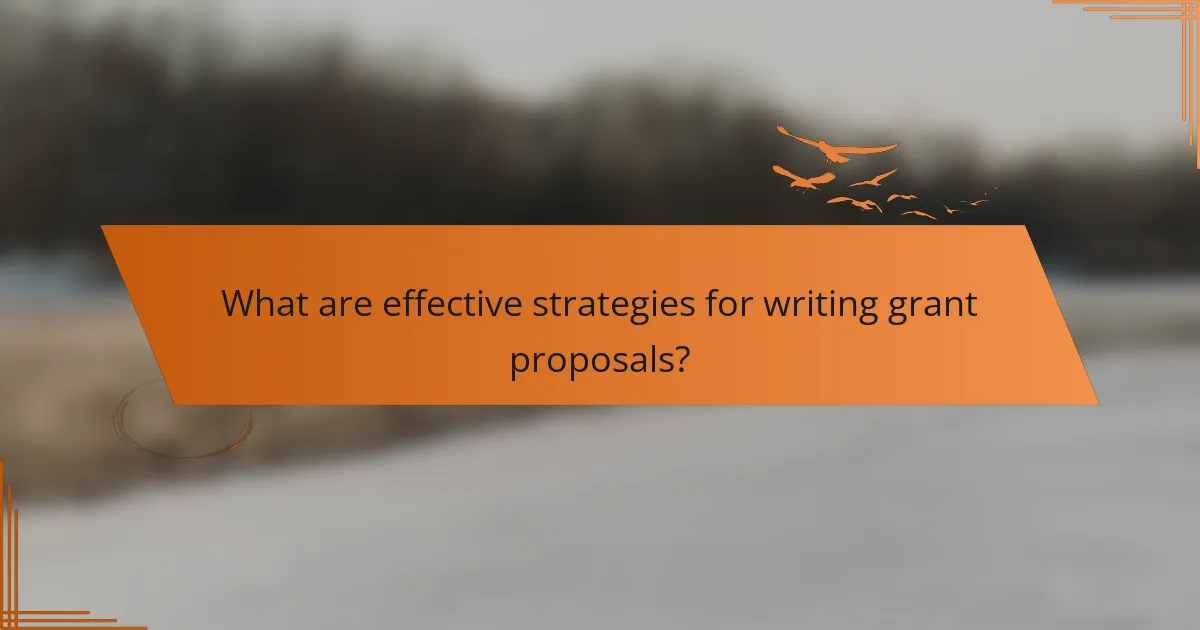
What are effective strategies for writing grant proposals?
Effective strategies for writing grant proposals include setting clear objectives, creating a detailed budget, and crafting compelling narratives. These elements help to communicate the purpose and impact of your project, making it more appealing to potential funders.
Clear objectives and goals
Establishing clear objectives and goals is crucial for any grant proposal. These should be specific, measurable, achievable, relevant, and time-bound (SMART). For example, instead of stating a goal to “help pets,” specify that you aim to “rescue 100 dogs from local shelters within the next year.”
When outlining your objectives, consider the needs of your community and how your project addresses them. This alignment increases the likelihood of securing funding, as it demonstrates a clear understanding of the issues at hand.
Detailed budget planning
A detailed budget is essential for illustrating how funds will be allocated. Break down costs into categories such as personnel, supplies, and operational expenses. For instance, if your project requires veterinary care, specify the expected costs for vaccinations and treatments.
Be transparent about your funding sources and any matching funds you may have. This not only builds credibility but also shows funders that you are committed to the project’s success. Avoid common pitfalls like underestimating costs or failing to account for indirect expenses.
Compelling storytelling
Compelling storytelling can significantly enhance your grant proposal. Use narratives to illustrate the impact of your work, sharing real-life stories of pets that have benefited from your initiatives. This emotional connection can resonate with funders and make your proposal stand out.
Incorporate data and testimonials to support your story. For example, include statistics on the number of animals saved or quotes from community members about the importance of your work. This combination of narrative and evidence creates a powerful case for funding.

Which organizations offer grants for pet rescue initiatives?
Several organizations provide grants specifically for pet rescue initiatives, helping shelters and rescue groups fund their operations. These grants can support various needs, from veterinary care to facility improvements, making a significant impact on animal welfare.
Petco Foundation
The Petco Foundation offers grants to nonprofit organizations focused on animal welfare, including pet rescues. Their funding can cover a range of projects, from adoption events to spay/neuter programs.
To apply, organizations must demonstrate their commitment to improving the lives of pets and provide a clear plan for how the funds will be used. It’s beneficial to highlight past successes and community impact in the application.
ASPCA Grants
The American Society for the Prevention of Cruelty to Animals (ASPCA) provides various grant opportunities aimed at enhancing the welfare of animals. Their grants often focus on specific projects, such as shelter operations, rescue efforts, and community outreach programs.
Applicants should carefully review the ASPCA’s funding priorities and ensure their proposals align with these goals. Successful applications typically include measurable outcomes and a detailed budget.
Maddie’s Fund
Maddie’s Fund is dedicated to supporting animal welfare organizations through grants that promote the no-kill movement. They offer funding for innovative programs that increase pet adoptions and improve shelter operations.
When applying for a Maddie’s Fund grant, organizations should emphasize their strategies for reducing euthanasia rates and enhancing community engagement. Providing data on past initiatives can strengthen the application.
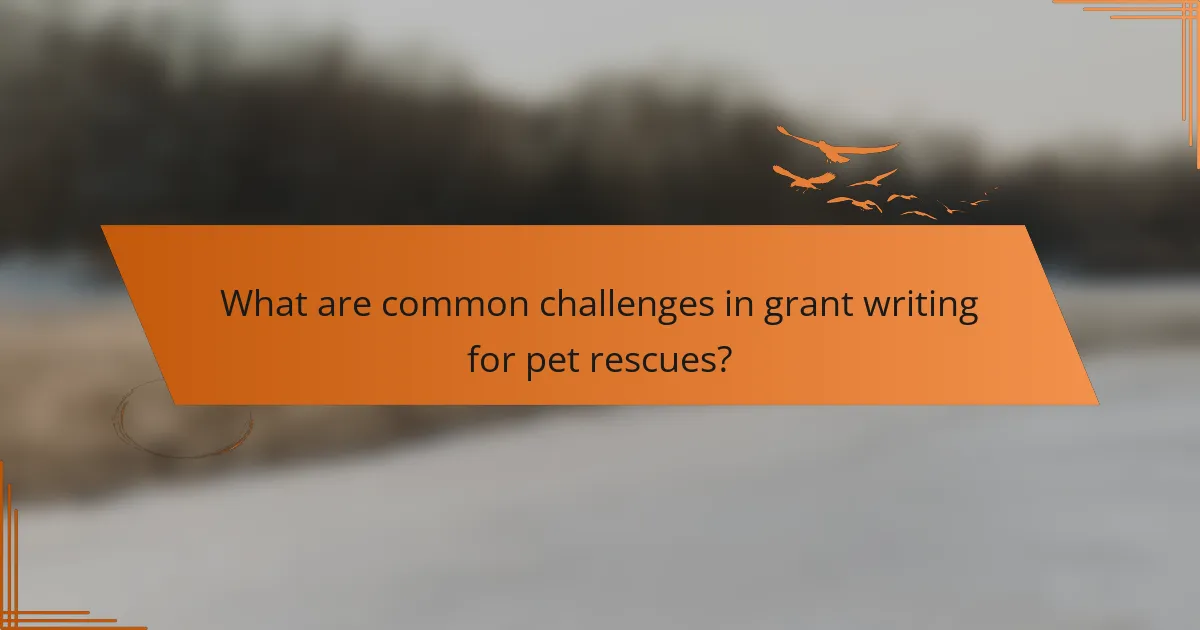
What are common challenges in grant writing for pet rescues?
Pet rescues often face several challenges when writing grants, including limited funding opportunities, high competition for available funds, and insufficient data to support their proposals. Understanding these obstacles can help organizations craft more compelling applications.
Limited funding opportunities
Many pet rescues struggle with limited funding opportunities, as grants specifically for animal welfare can be scarce. Organizations should research various sources, including local foundations, government programs, and corporate sponsorships, to identify potential funding avenues.
It’s beneficial to diversify funding sources by applying for multiple grants simultaneously. This approach increases the chances of securing necessary funds, as relying on a single grant can be risky.
High competition
The competition for grants in the pet rescue sector is often intense, with numerous organizations vying for the same funding. To stand out, rescues must clearly articulate their mission, demonstrate impact, and showcase unique programs or services that differentiate them from others.
Networking with other organizations can also provide insights into successful strategies and common pitfalls. Collaborating on joint proposals may enhance credibility and increase the likelihood of funding.
Insufficient data and metrics
Many pet rescues lack the necessary data and metrics to effectively support their grant applications. Funders typically look for evidence of past successes, such as adoption rates, community outreach, and financial stability.
To address this, rescues should implement data collection practices, such as tracking adoption statistics and conducting surveys to gauge community impact. Presenting clear, quantifiable results can significantly strengthen grant proposals and improve funding chances.

How can pet rescues improve their grant writing skills?
Pet rescues can enhance their grant writing skills by engaging in targeted training, utilizing available resources, and connecting with experienced professionals. These strategies help organizations craft compelling proposals that effectively communicate their mission and needs to potential funders.
Workshops and training sessions
Participating in workshops and training sessions focused on grant writing can significantly boost a pet rescue’s skills. These programs often cover essential topics such as proposal structure, budgeting, and storytelling techniques that resonate with funders.
Look for local nonprofit organizations or community colleges that offer grant writing workshops. Many sessions are available at little to no cost, making them accessible for rescues operating on tight budgets.
Online resources and templates
Numerous online resources and templates can streamline the grant writing process for pet rescues. Websites like GrantSpace and the Foundation Center provide free access to sample proposals, checklists, and guidelines tailored for nonprofit organizations.
Utilizing templates can save time and ensure that all necessary components are included in a proposal. However, it’s crucial to customize these templates to reflect the unique mission and needs of your rescue to maintain authenticity.
Networking with experienced grant writers
Building a network with experienced grant writers can provide invaluable insights and support for pet rescues. Engaging with professionals in this field can lead to mentorship opportunities, feedback on proposals, and tips on successful strategies.
Consider joining local nonprofit associations or online forums where grant writers gather. These connections can help rescues stay informed about funding opportunities and best practices in grant writing.
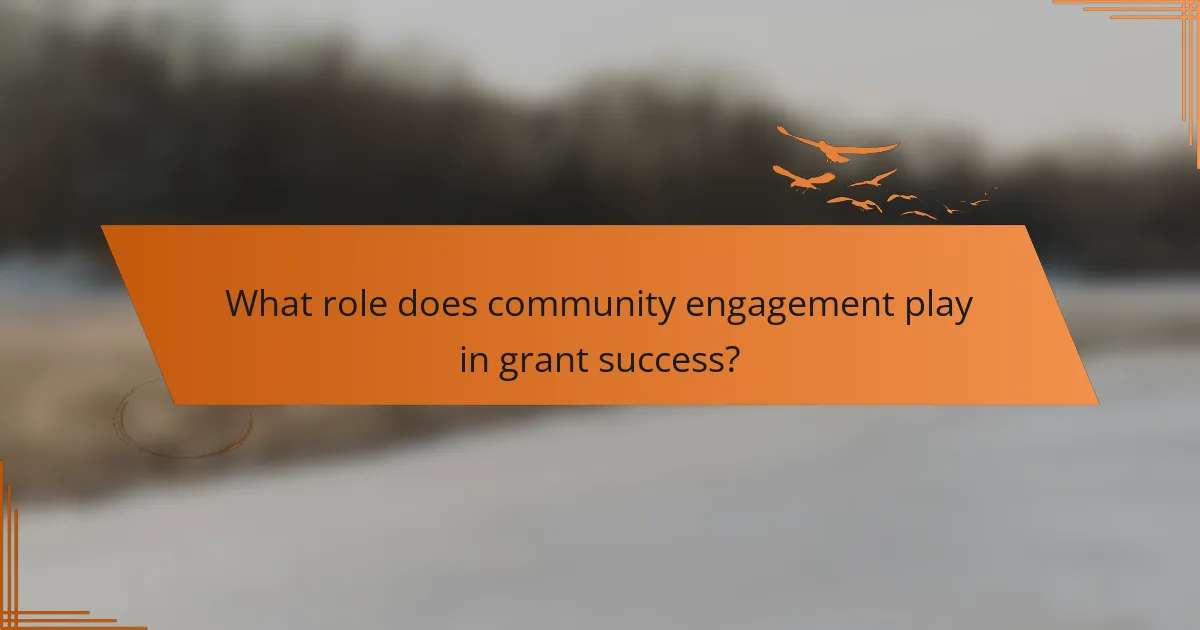
What role does community engagement play in grant success?
Community engagement is crucial for grant success as it fosters relationships and builds trust between organizations and their supporters. Engaging the community can enhance the credibility of a grant proposal, making it more likely to receive funding.
Building relationships with local stakeholders
Establishing strong connections with local stakeholders, such as pet owners, veterinarians, and animal welfare groups, can significantly enhance your grant application. These relationships can provide valuable insights into community needs and demonstrate a collaborative approach to potential funders.
Consider hosting community events or workshops to engage stakeholders. This not only raises awareness about your initiatives but also helps gather support and resources that can be highlighted in your grant proposal.
Incorporating community feedback
Incorporating community feedback into your grant proposal shows funders that your organization is responsive to the needs of the people you serve. Gathering input through surveys or focus groups can provide essential data that strengthens your case for funding.
When presenting this feedback in your proposal, be specific about how it influenced your project design and objectives. This demonstrates a commitment to addressing community concerns and enhances the overall impact of your initiative.
Demonstrating community support
Showing evidence of community support can significantly bolster your grant application. This can include letters of support from local organizations, testimonials from community members, or statistics on community involvement in your programs.
Utilize social media and local news outlets to raise awareness and gather endorsements. Highlighting this support in your proposal can reassure funders that your project has a solid foundation and a network of advocates ready to assist.
